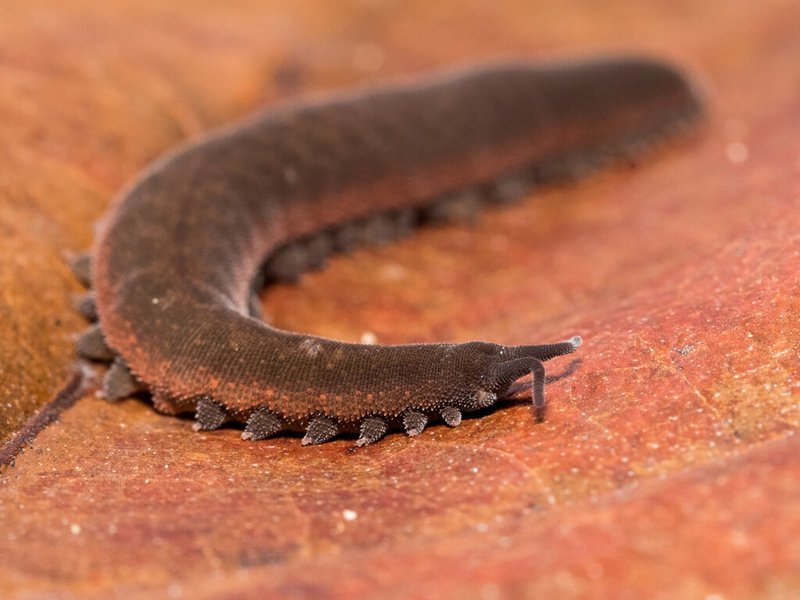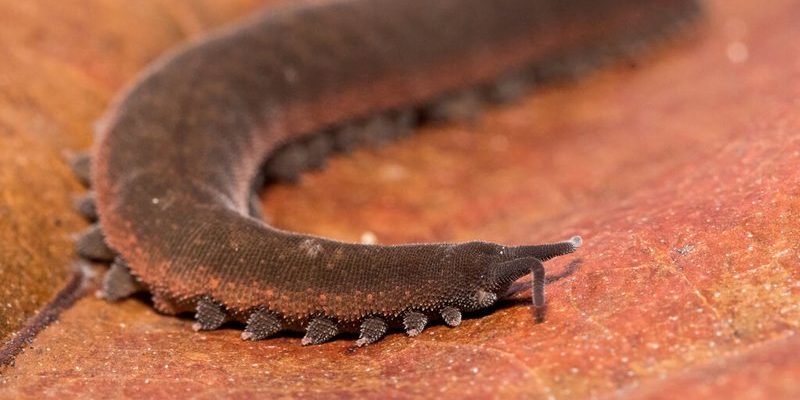
Now you might be wondering, how exactly do these worms move with such skill? Velvet worms, or *Onychophora*, are more than just their charming appearance. Their method of locomotion can teach us a lot about adaptability and evolution in the animal kingdom. So, let’s dive deeper into how these little beauties achieve their impressive movement.
Understanding Velvet Worms: A Quick Overview
Before we jump into their movement, it’s useful to know a bit about velvet worms themselves. These critters might look like a cross between a slug and a caterpillar, but they belong to their own phylum. Found primarily in rainforests, they thrive in damp environments. They typically measure between 5 to 15 centimeters long and have soft, moist bodies covered in fine hairs, which adds to their velvety appearance.
What makes velvet worms particularly interesting is their leg structure. Each worm has up to 43 pairs of legs, which are not true legs in the traditional sense. Instead, they have fleshy appendages called lobopodia. These lobopodia provide the flexibility and grip that enable velvet worms to navigate the uneven forest floor. Imagine trying to walk on a path made of pebbles without proper shoes; that’s how challenging the terrain can be for them!
How Does Their Movement Work?
When it comes to movement, velvet worms have a fascinating system. They employ a unique combination of muscles and hydraulic pressure to extend and contract their lobopodia. It’s like they’re using a built-in pump to control how their limbs move. This allows them to push off the ground and pull themselves along with uncanny efficiency.
One of the key aspects of their movement is coordination. As they move, you’ll notice that their legs work together seamlessly. The front legs might push forward while the back legs pull themselves up, creating a flowing motion. It’s not unlike how a well-rehearsed team performs a dance routine—each member knows their role, ensuring a smooth performance.
The Role of Hemolymph in Movement
Now, let’s talk about *hemolymph*, the fluid that circulates in their bodies. Think of it as the velvet worm’s version of blood. Hemolymph plays a crucial role in their ability to move. By changing the pressure of this fluid, they can control their lobopodia. When they want to extend a leg, they increase the fluid pressure in that particular limb. This clever mechanism allows them to adapt quickly to their surroundings, making split-second adjustments as they navigate through dense vegetation.
The Importance of Leg Coordination
You might be thinking, “So what’s the big deal about coordination?” Well, for velvet worms, good leg coordination is essential for survival. Their habitats are fraught with challenges like uneven terrain, obstacles, and predators. Efficient movement allows them to escape danger and hunt for prey, which primarily consists of soft-bodied insects.
Imagine trying to escape from a predator while trying to catch dinner. If they didn’t have great coordination, they’d likely become a meal themselves. Their ability to move smoothly also helps them to be stealthy hunters. They can approach their prey quietly, ready to launch their sticky slime for an effective capture—another fascinating aspect of their evolutionary design!
Comparing Velvet Worms to Other Creatures
It’s interesting to compare velvet worms to other legged creatures. For instance, insects and spiders have jointed legs that allow for quick, agile movement. In contrast, velvet worms’ lobopodia offer a more versatile range of motion, making them particularly good at maneuvering through dense vegetation.
You may also consider how other soft-bodied animals, like earthworms, move. While earthworms rely on muscle contractions and soil friction to slither, velvet worms use their hydraulic system and leg coordination. This not only sets them apart but showcases the diverse strategies of locomotion in the animal kingdom.
Are They Close Relatives to Anything?
Interestingly, velvet worms are considered to be close relatives of arthropods (like spiders and insects) and annelids (like earthworms). It’s their unique adaptations and characteristics that help them thrive in their specific niches. By studying them, scientists gain insights into the evolutionary paths of these groups, painting a clearer picture of our planet’s biodiversity.
Why Studying Velvet Worms Matters
So why is all of this important? Understanding how velvet worms move and adapt can shed light on broader ecological and evolutionary principles. Their unique adaptations can give us clues about how other species might survive in changing environments. Plus, studying these creatures can inspire new technologies in robotics and engineering, mimicking their smooth movements for practical applications.
In a world that continually faces challenges like climate change and habitat destruction, researching creatures like velvet worms helps us appreciate the intricate web of life and the many ways organisms have adapted to survive. By learning from them, we can gain insights into fostering better conservation practices and maintaining biodiversity.
Wrap-Up: Movement in Nature
In conclusion, velvet worms are a prime example of how unique adaptations pave the way for survival. Their fascinating leg coordination and specialized movement techniques allow them to thrive in their environments. As you explore the wonderful world of nature, take a moment to appreciate these little creatures and the complexity of their movements.
Next time you’re in a damp forest or even just thinking about the wonders of nature, remember the velvet worm and its extraordinary way of getting around. Isn’t it amazing how even the smallest beings can teach us so much about life, movement, and adaptation?

